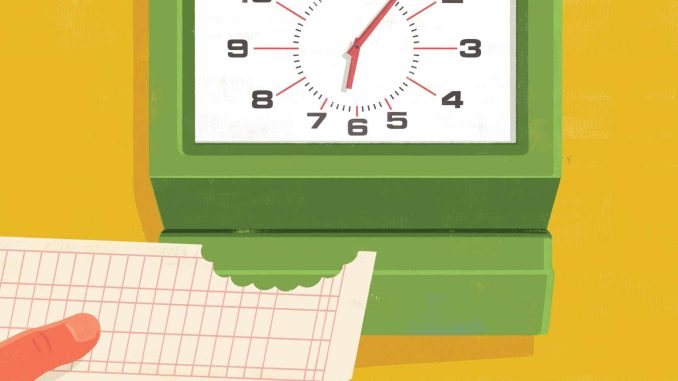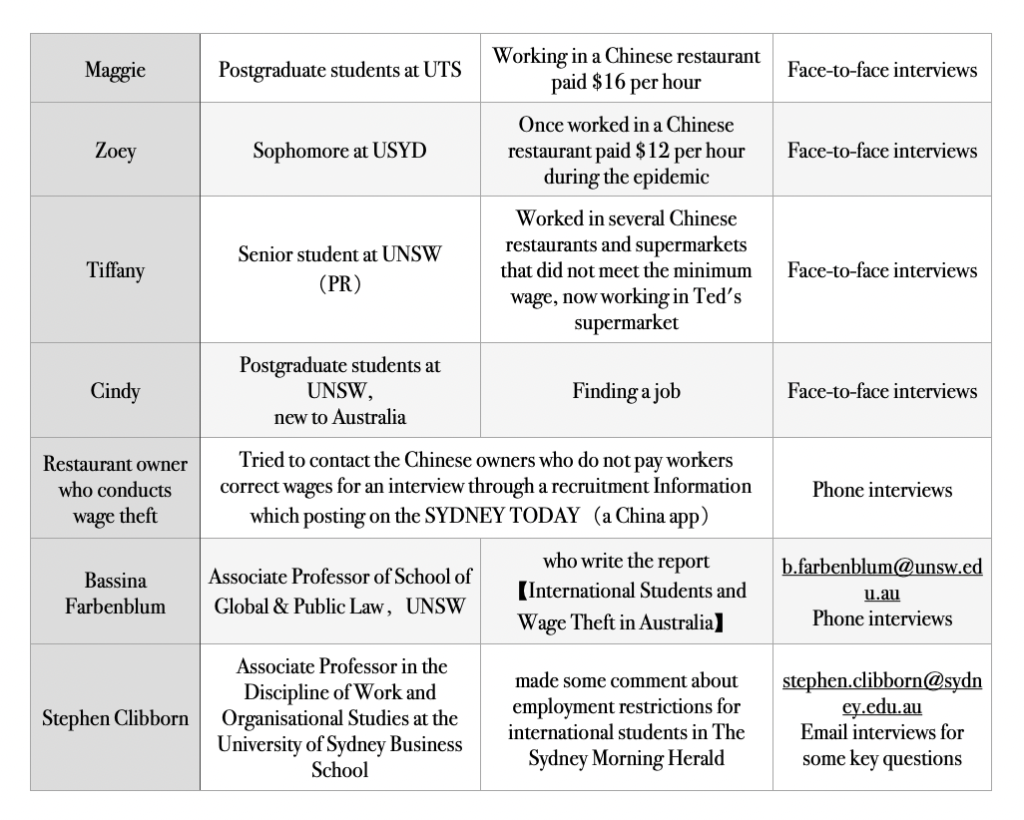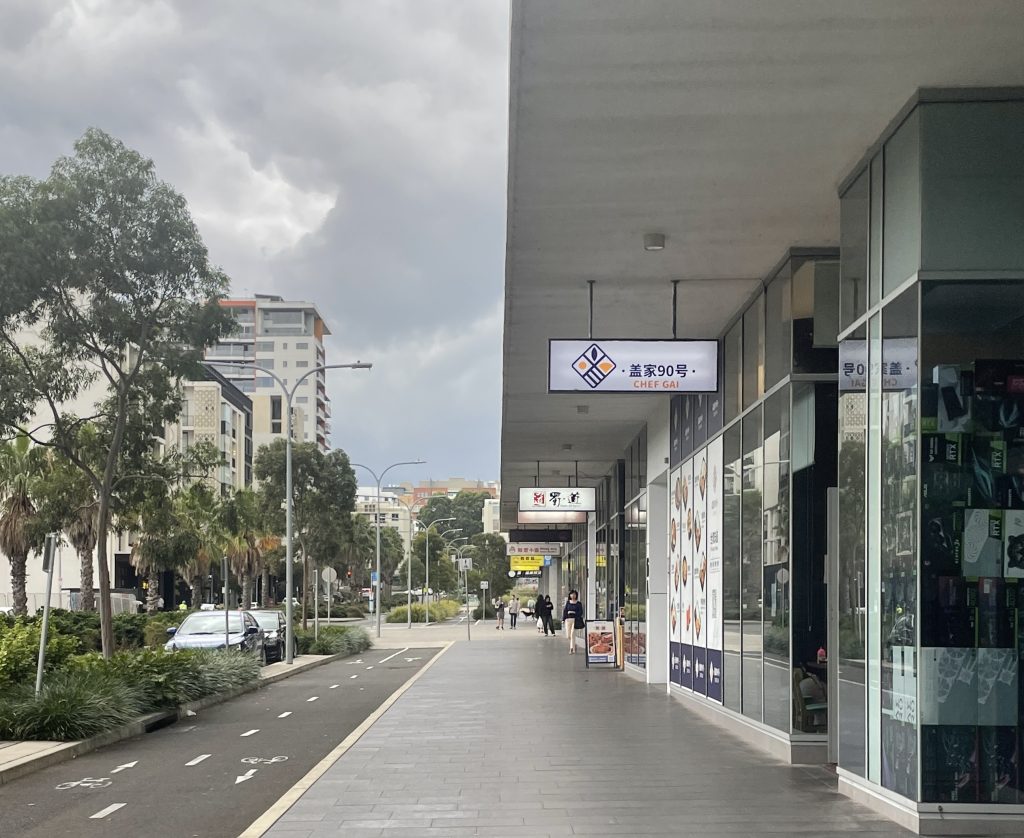
This news will be a feature article about how Chinese international students struggle with wage theft in Australia.
Story topic and angle
The Australia Government always cracks down on wage theft. However, with the end of the epidemic and the come of large numbers of Chinese students, wage theft is still prevalent in areas where international students are concentrated, such as Zetland, Burwood and Haymarket. Most Chinese students prefer part-time or casual jobs in Chinese shops because of language, commuting time, etc. Due to the imbalance between supply and demand, Chinese employers offer them a cash wage of around $16 (or even less), far below the minimum standard. Some Chinese students are not aware of the minimum wage. Others know that such wages are illegal, but they have to accept it because they don’t know how to protect their rights. Three years after the epidemic affected the global economy, they need jobs more than ever to subsidise the high cost of living and rent.
Publication and target user group
This story will be published in The Guardian Australia because it reported a similar news feature in this outlet three years ago. This one could be used as a follow-up story. The main target audiences for the feature article will be international students, employers and consumers. This is also in line with the Guardian Australia’s primary audience age range of 18-44 years. As the media industry leader, the Guardian also gets more attention from Chinese students.
Detailed sources of information
1.Human

2.Documentary & Online
On 28 January 2023, the Chinese Service Center for Scholarly Exchange announced that foreign qualifications obtained through online distance learning would no longer be recognized after the autumn semester of 2023.
As a result, approximately 40,000 international students are arriving in Australia.
At the same time, the Australian Government has declared that from 1 July 2023, working hours for student visa holders will be restricted again, and the cap will be increased from 40 hours per fortnight to 48 hours per fortnight. The Australian Government wants to ensure that international students can support themselves financially and gain valuable work experience to the maximum extent possible without disrupting their studies.
However, Stephen Clibborn, an employment relations researcher at the University of Sydney, says the policy should focus on ensuring that international students are paid the correct legal wage for every hour and that the hourly rate is more important than long working hours.
From 1 July 2022, the hourly minimum wage in Australia will be A$21.38 per hour or A$812.60 per week for 38 hours (before tax). The minimum wage for temporary employees is $26.725. At the same time, more than three-quarters of international students are paid less than the minimum casual hourly rate.
Wage theft in Australia hit a record high in 2023.
Relevant ideas for multimedia, hypertext and interactivity

1. Photos of the Chinese restaurant district
2. Photo/video of interviewees who suffer wage theft
3. If possible, audio of the interview with Chinese bosses who did not pay workers the correct wages
4. Screenshot of the post on Little Red Book by a Chinese student exposing a wage-theft restaurant
5. A graph of the data on wage theft
6. Hyperlinks to websites that promote Australian employment law and help international students with legal aid
7. The author’s contact information




Hi Xuan You, I like your proposal, it is very detailed and complete. Firstly, your headline is concise and captures the point of the article. Secondly, the article cites several reliable sources, including government documents and online data, which adds credibility to the article. And the article uses hyperlinks and images correctly. I noticed that your list of interviewees is very diverse, which is good, but for students I would suggest that in the final work you pick two to focus on to tell their story, as too many interviewees appearing could lead to a lot of confusion for readers as to who happened what. Also, I noticed you linked to an official Chinese document, I don’t think it would be appropriate to link to a Chinese page in an Australian publication as the readers are not all Chinese, I would provide you a relevant news link which might be more appropriate: https://www.theage.com.au/education/snap-chinese-edict-to-send-students-rushing-back-to-australian-campuses-20230129-p5cga9.html?_gl=1*s6qjm4*_ga*NTQ2OTYwMTI2LjE2Nzg3MTM3Mjg.*_ga_4LCTX9B2C1*MTY4MjA0MjYyNy4zLjAuMTY4MjA0MjYyNy42MC4wLjA.
Looking forward to your work! Good luck!
I really appreciate your valuable advice. It’s really helpful! Many thanks~